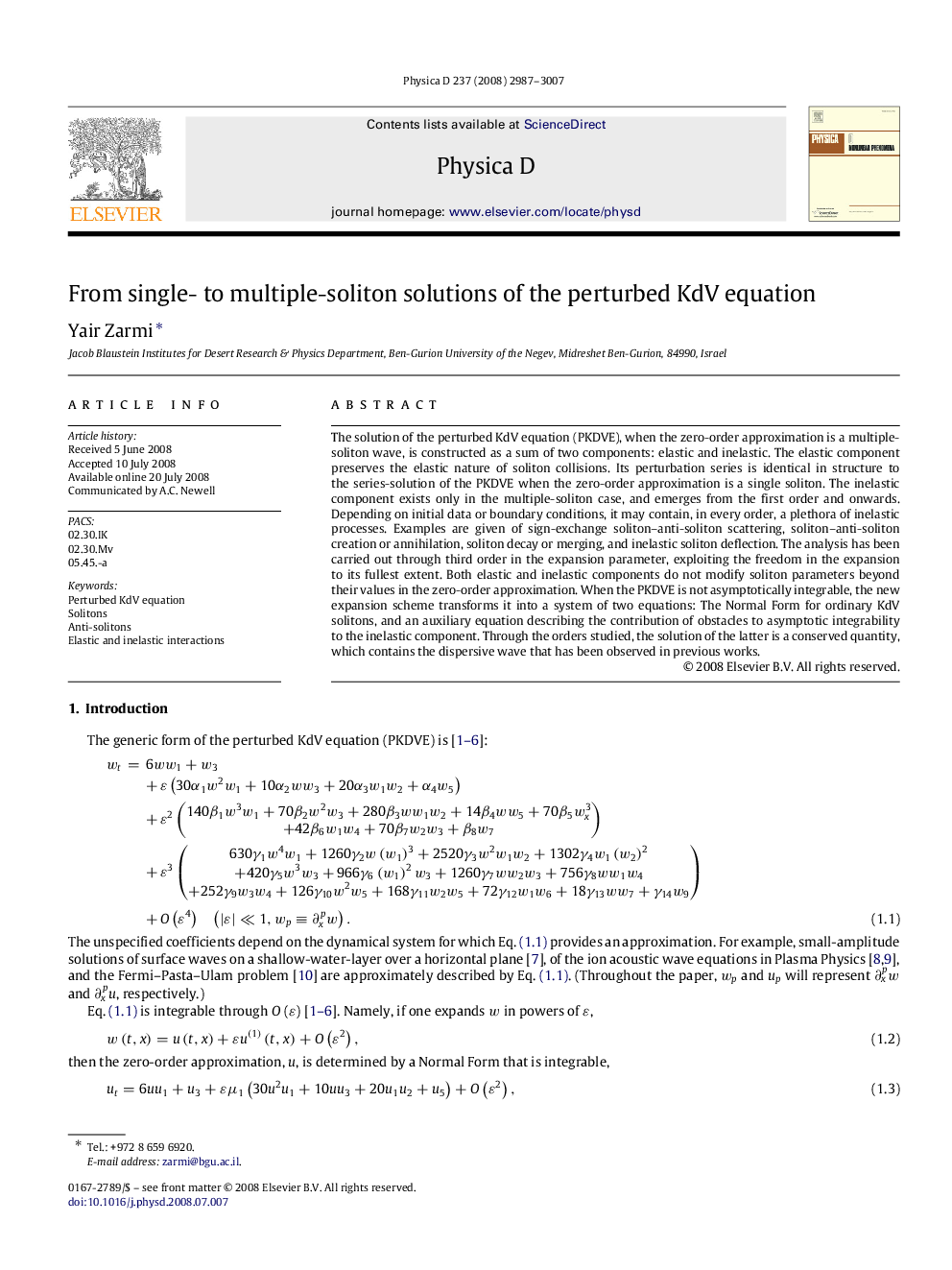| Article ID | Journal | Published Year | Pages | File Type |
|---|---|---|---|---|
| 1897761 | Physica D: Nonlinear Phenomena | 2008 | 21 Pages |
Abstract
The solution of the perturbed KdV equation (PKDVE), when the zero-order approximation is a multiple-soliton wave, is constructed as a sum of two components: elastic and inelastic. The elastic component preserves the elastic nature of soliton collisions. Its perturbation series is identical in structure to the series-solution of the PKDVE when the zero-order approximation is a single soliton. The inelastic component exists only in the multiple-soliton case, and emerges from the first order and onwards. Depending on initial data or boundary conditions, it may contain, in every order, a plethora of inelastic processes. Examples are given of sign-exchange soliton-anti-soliton scattering, soliton-anti-soliton creation or annihilation, soliton decay or merging, and inelastic soliton deflection. The analysis has been carried out through third order in the expansion parameter, exploiting the freedom in the expansion to its fullest extent. Both elastic and inelastic components do not modify soliton parameters beyond their values in the zero-order approximation. When the PKDVE is not asymptotically integrable, the new expansion scheme transforms it into a system of two equations: The Normal Form for ordinary KdV solitons, and an auxiliary equation describing the contribution of obstacles to asymptotic integrability to the inelastic component. Through the orders studied, the solution of the latter is a conserved quantity, which contains the dispersive wave that has been observed in previous works.
Related Topics
Physical Sciences and Engineering
Mathematics
Applied Mathematics
Authors
Yair Zarmi,
